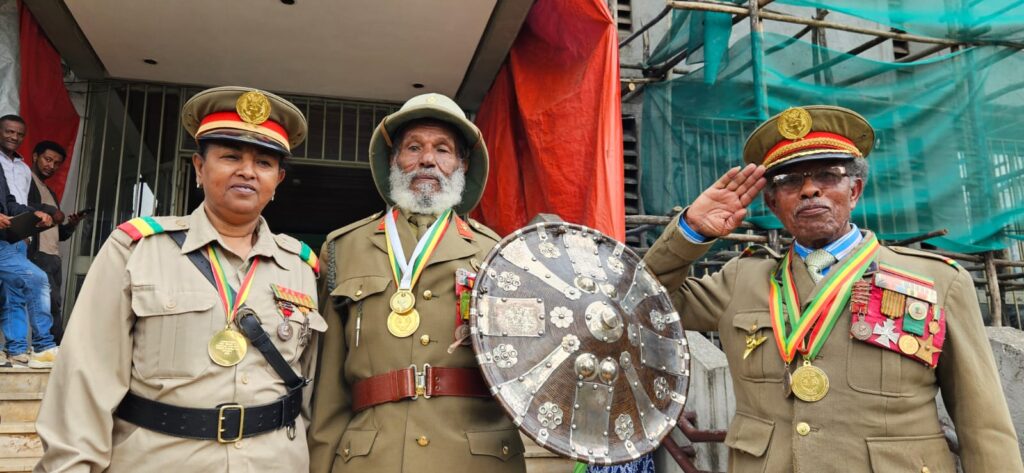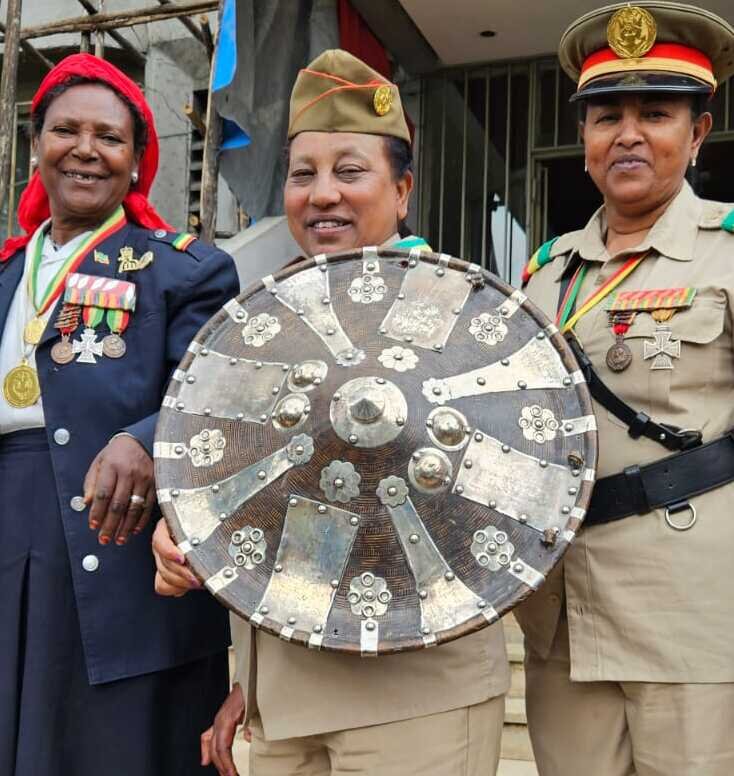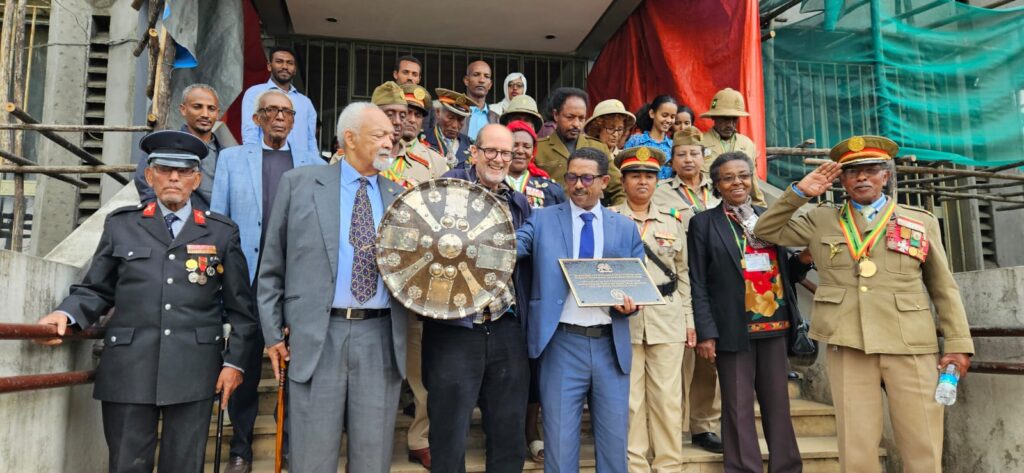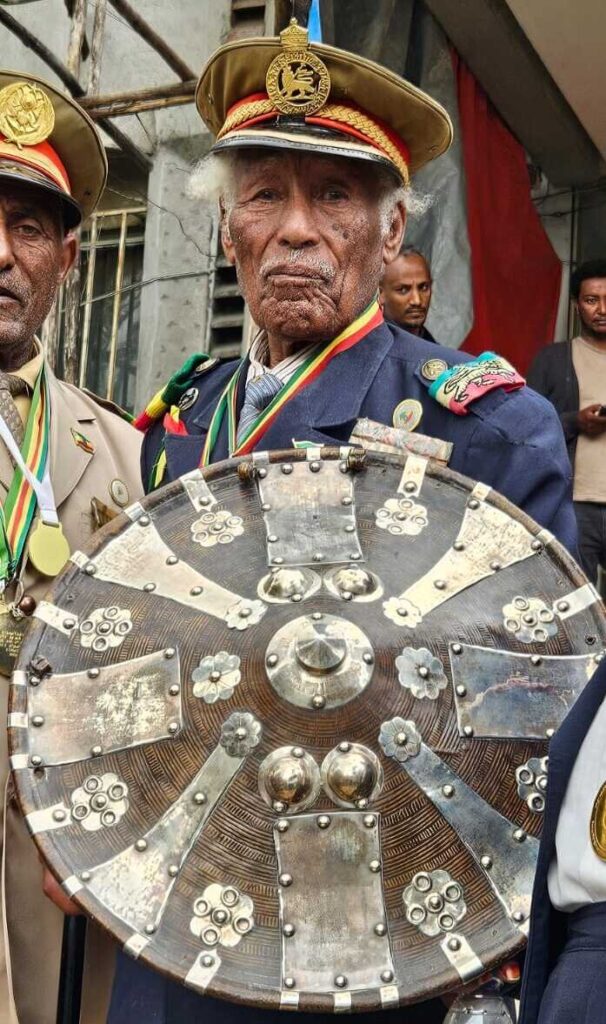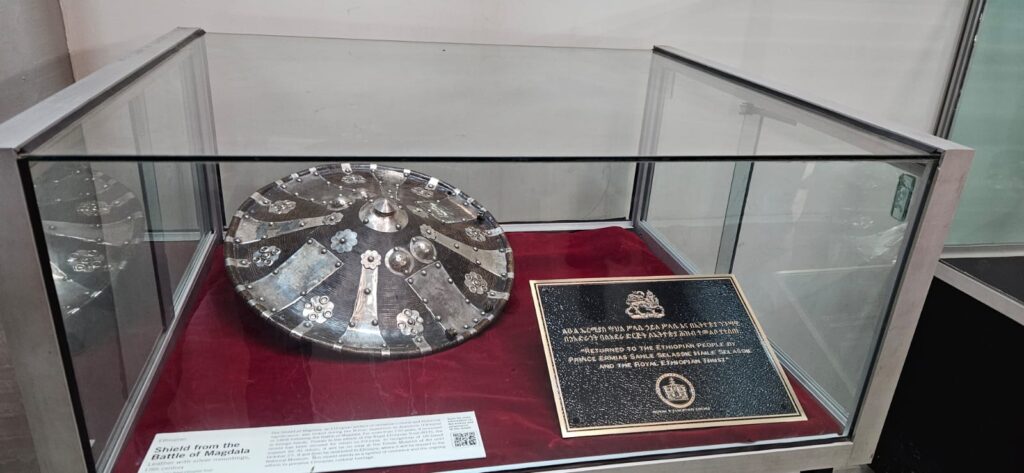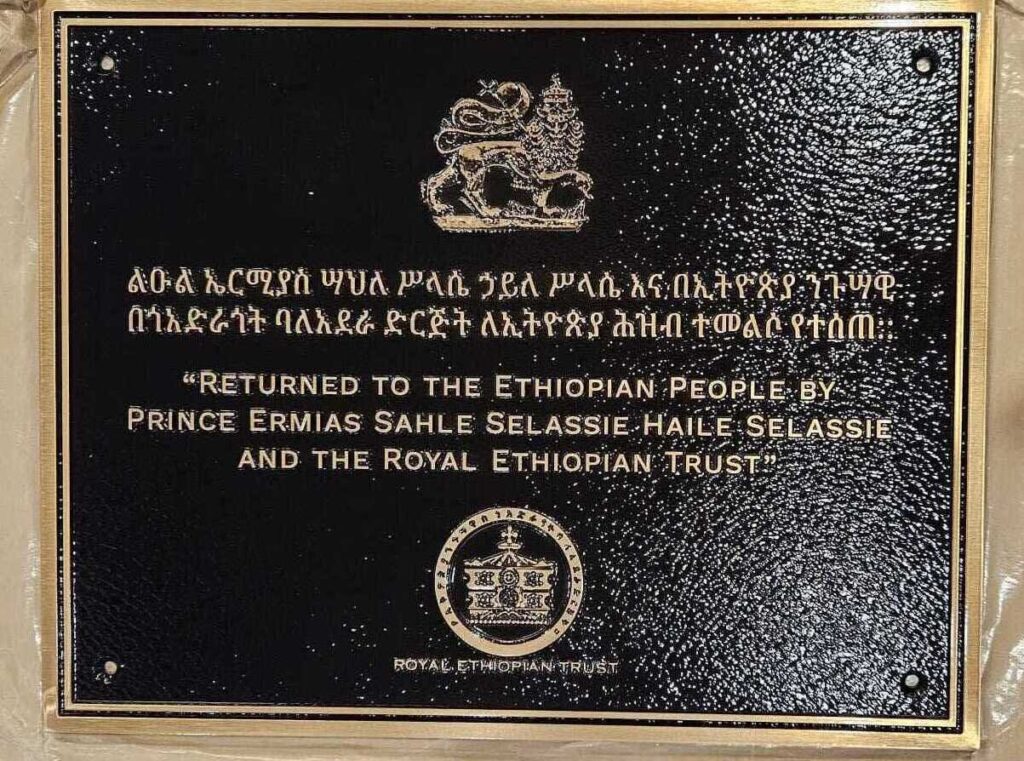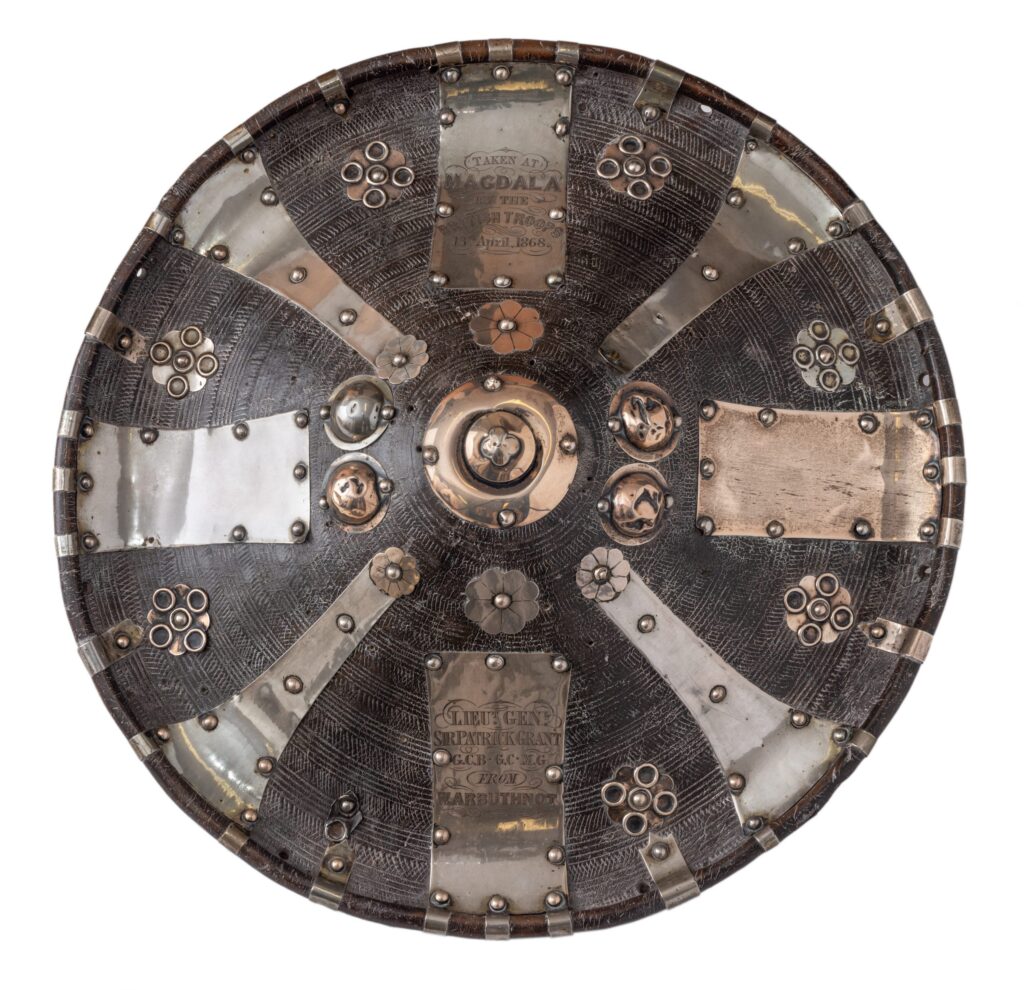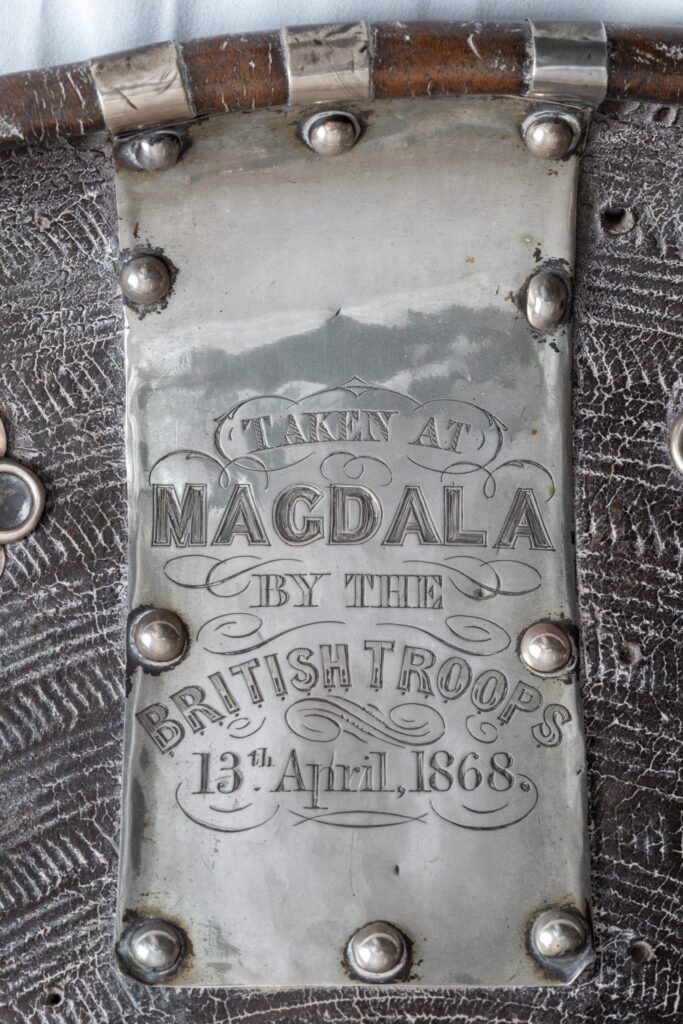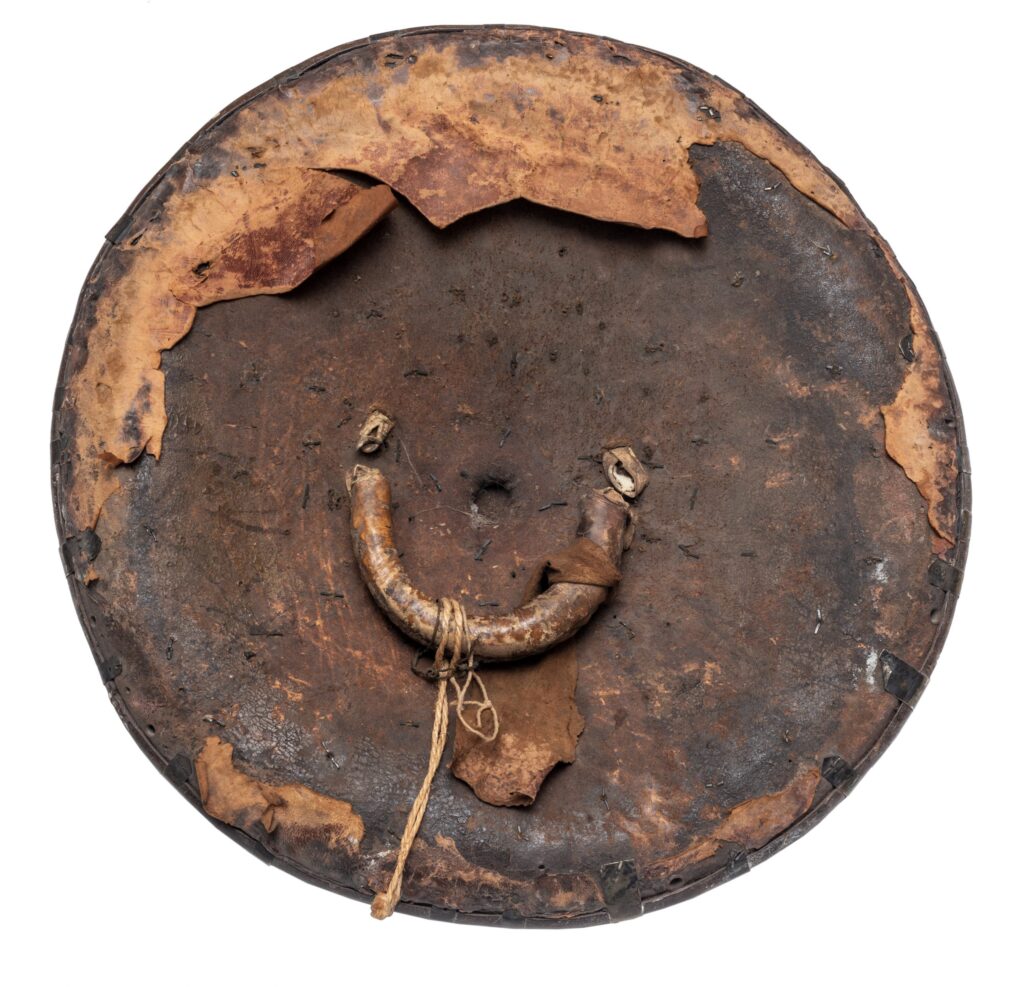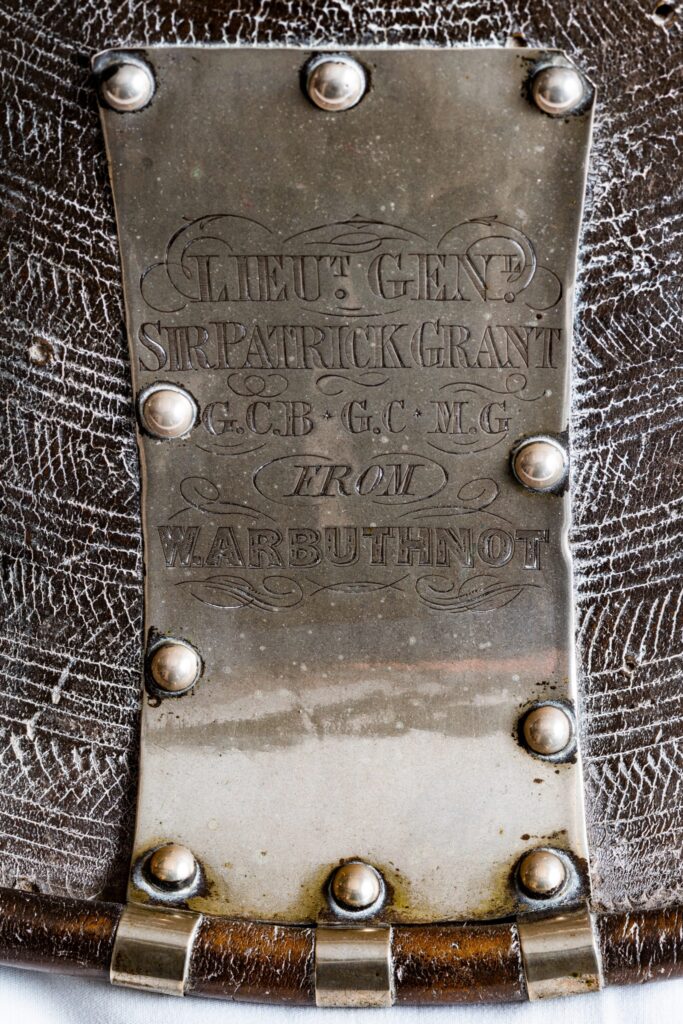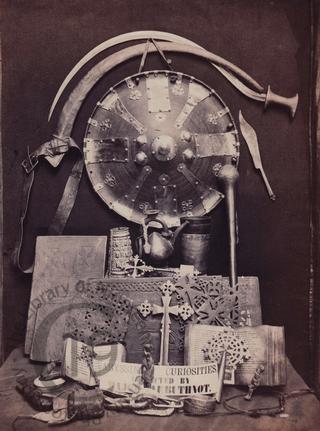What: Shield
Where: The National Museum of Ethiopia, Addis Ababa. The shield was removed from an auction in Newcastle, England in February, 2024 and returned to Ethiopia in November through the mediation of the Royal Ethiopian Trust.
Status: Clear link to Maqdala. Among other indicators, the central boss of the shield is engraved “Magdala 13th April 1868”.
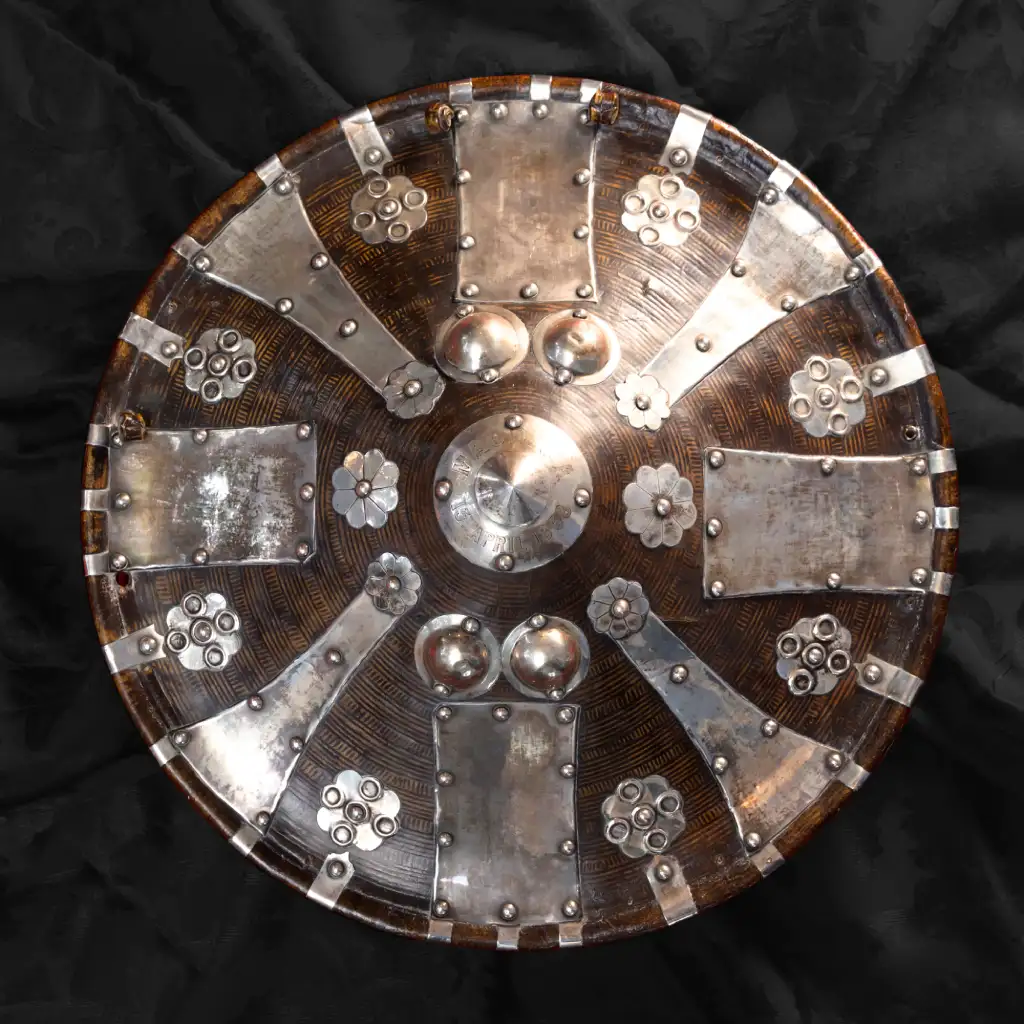
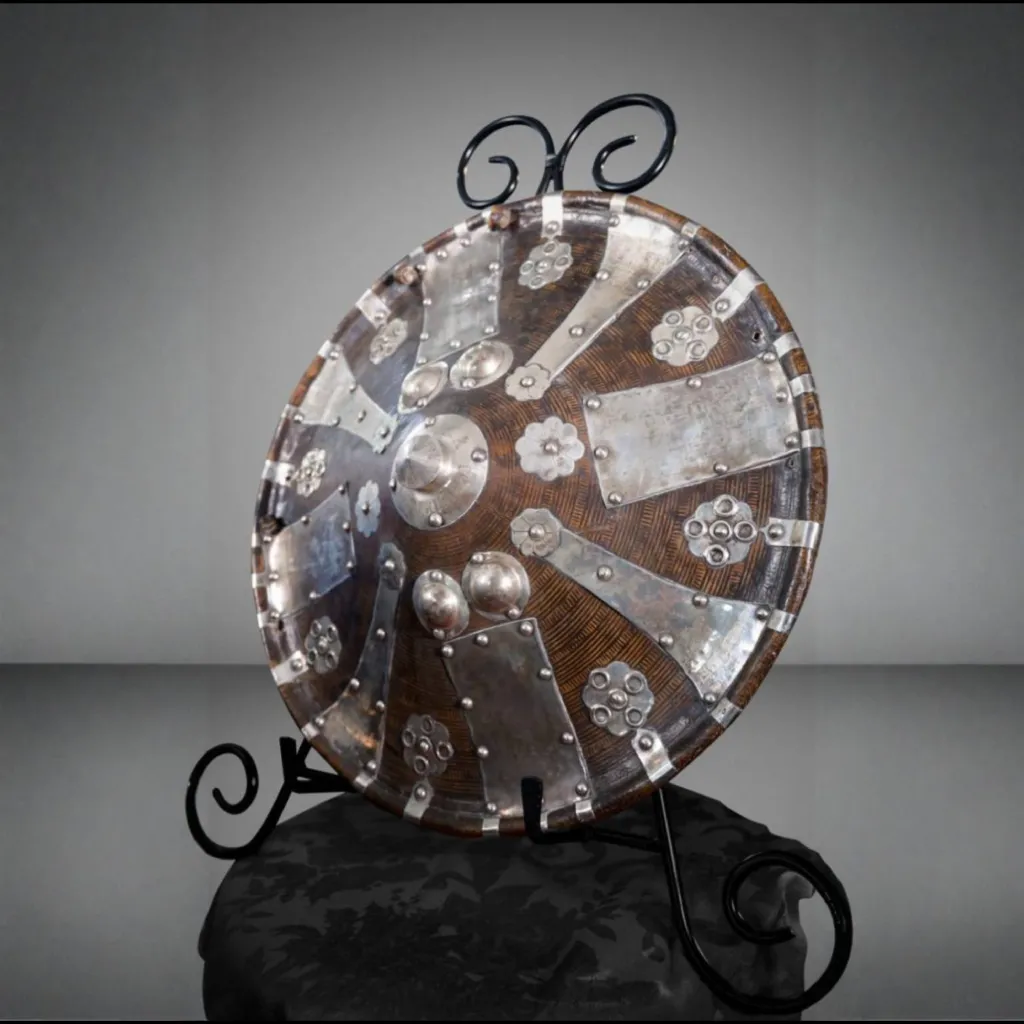

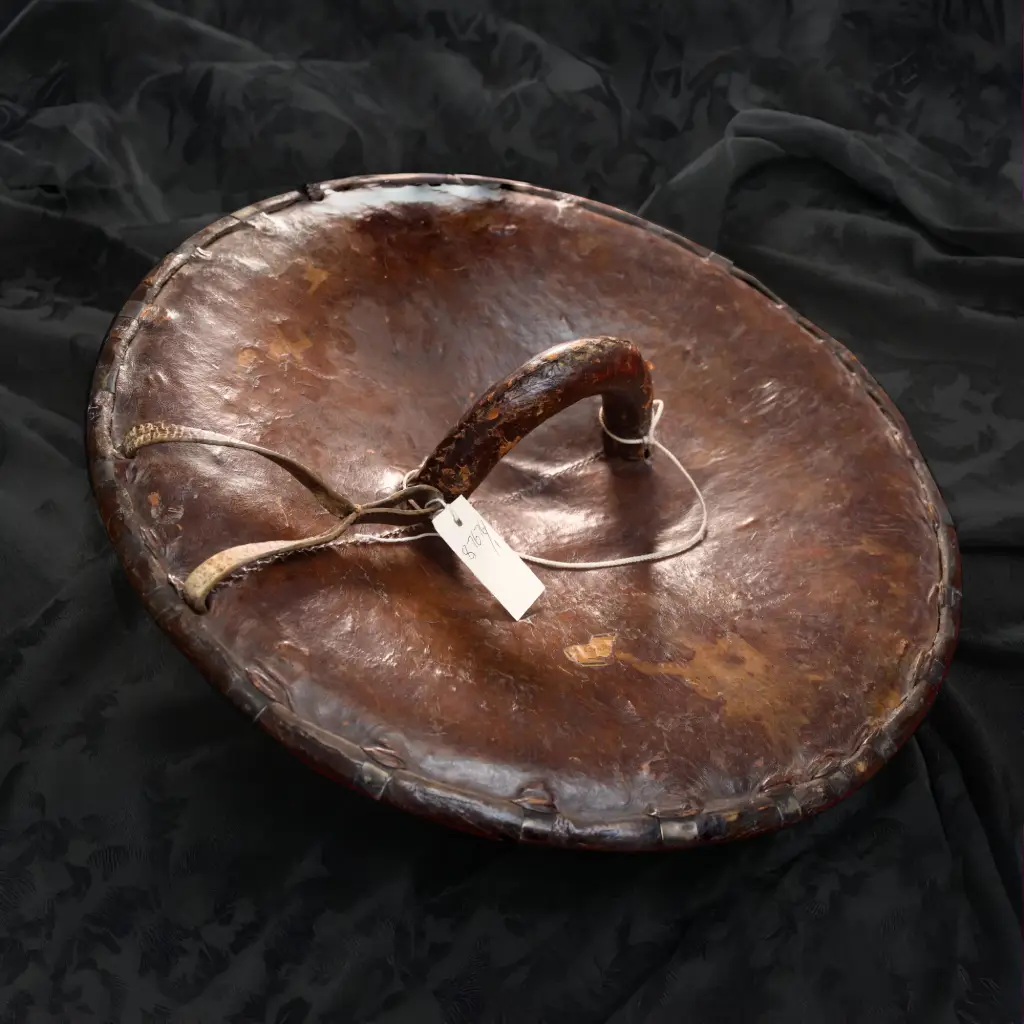
Provenance: This shield first appears in the British record in a 1932 sale of items from the collection of the Lambton family, through Anderson & Garland Auctioneers of Newcastle upon Tyne. The link to the Lambdons also strengthens the case for a link between the shield and Maqdala. To quote an essay published by the Royal Ethiopian Trust:
"It is notable that Sir Hedworth Lambton, the patriarch of the Lambton family, had a significant connection to Lady Valerie Meux, an aristocrat with a strong interest in Ethiopian culture. Sir Hedworth, a naval officer and the commander of the Naval Brigade at the Siege of Ladysmith, became the chief beneficiary of Lady Meux’s estate. This inheritance not only linked Sir Hedworth to Lady Meux’s wealth but also possibly to her collection of Ethiopian treasures, making it likely that the Shield of Magdala entered the Lambton Estate via Lady Meux. The shield’s back is marked with the word 'Tower,' suggesting its association with one of two towers on the Lambton Estate."
The shield was put up for sale again by the same auctioneer in February, 2024. Here is a link to an archived version of the auction page. This time, Anderson & Garland did not name the owner, but did mention the historical context, with a reference to the “expedition and its troops looting many local artifacts which they took back to Britian”.
The Ethiopian Heritage Authority – part of Ethiopia’s government – then contacted Anderson & Garland on Feb. 23 in a letter that said:
"Since the artefact has been wrongfully acquired in a context of a punitive expedition to Ethiopia in which these items were looted the sale of this item in your auction is inappropriate. As the legally mandated authority concerned with Ethiopian heritage in Ethiopia and abroad we would therefore strongly urge you to cancel the auction, and request that you contact the sellers to arrange for the restitution of this looted item and repatriation to its country of origin and its legally rightful owners, the Ethiopian government represented by the Heritage Authority under the Ministry of Tourism."
The auctioneer agreed to withdraw the shield from sale. It soon emerged that it had been contacted by the Royal Ethiopian Trust – a non-profit organization established by His Imperial Highness Prince Ermias Sahle-Selassie Haile-Selassie, grandson of Emperor Haile-Selassie I – which offered to acquire the shield and arrange its return to Ethiopia.
“This shield is not just a historical artifact; it is a symbol of Ethiopia’s history and resilience,” said Prince Ermias. “Our efforts and success in regaining this treasure is a testament to our commitment to preserve our heritage and honor our ancestors who fought for our nation’s sovereignty.”
It was first taken in October to Toledo, Ohio, where it was displayed at the Toledo Museum of Art. Then campaigner and researcher Alula Pankhurst brought it to Ethiopia in November where it was greeted at the National Museum where it remains on display.
